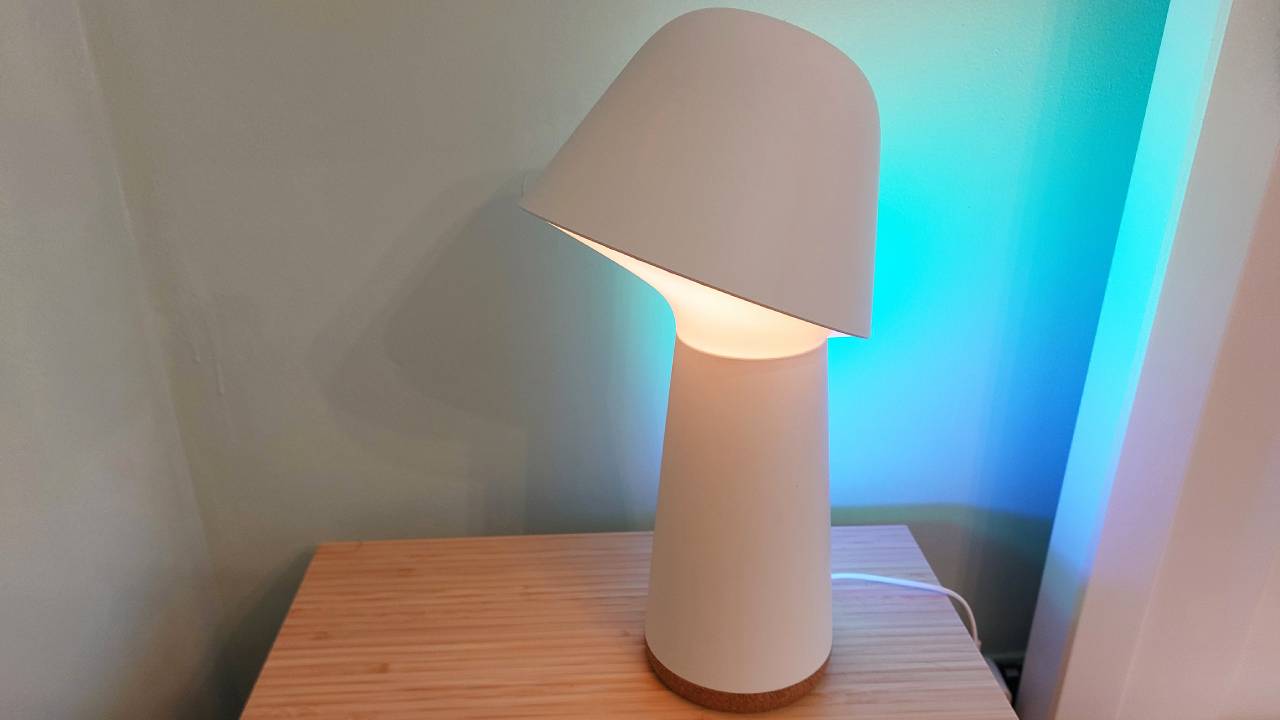
In mid 2024, Philips Hue announced the launch of its first ever wake up light, designed to wake you up more naturally and set the mood in your bedroom to unwind after a long day… but how does it compare to other best wake up lights?
The Philips Hue Twilight Sleep and Wake Up Light immediately caught eyes when it launched, as it has a penguin-esque design which is not only different to traditional bedside lamps, but also other wake up lights on the market. But as the brand is better known for its best smart lights, I was intrigued to try the Philips Hue Twilight to see how its smart controls could help send me to sleep and wake me up in the morning – here’s how I got on.
Philips Hue Twilight review: price and availability
The Philips Hue Twilight is available for £249.99 / $279.99 and is available to buy at Philips Hue and select retailers like Amazon. It comes in black or white – I tried the white version – and it doesn’t need to be connected to the Philips Hue Bridge in order to work. However, if you already have a Philips Hue Bridge, you can connect the Twilight to it – see what does the Philips Hue Bridge do and is it necessary for more details.
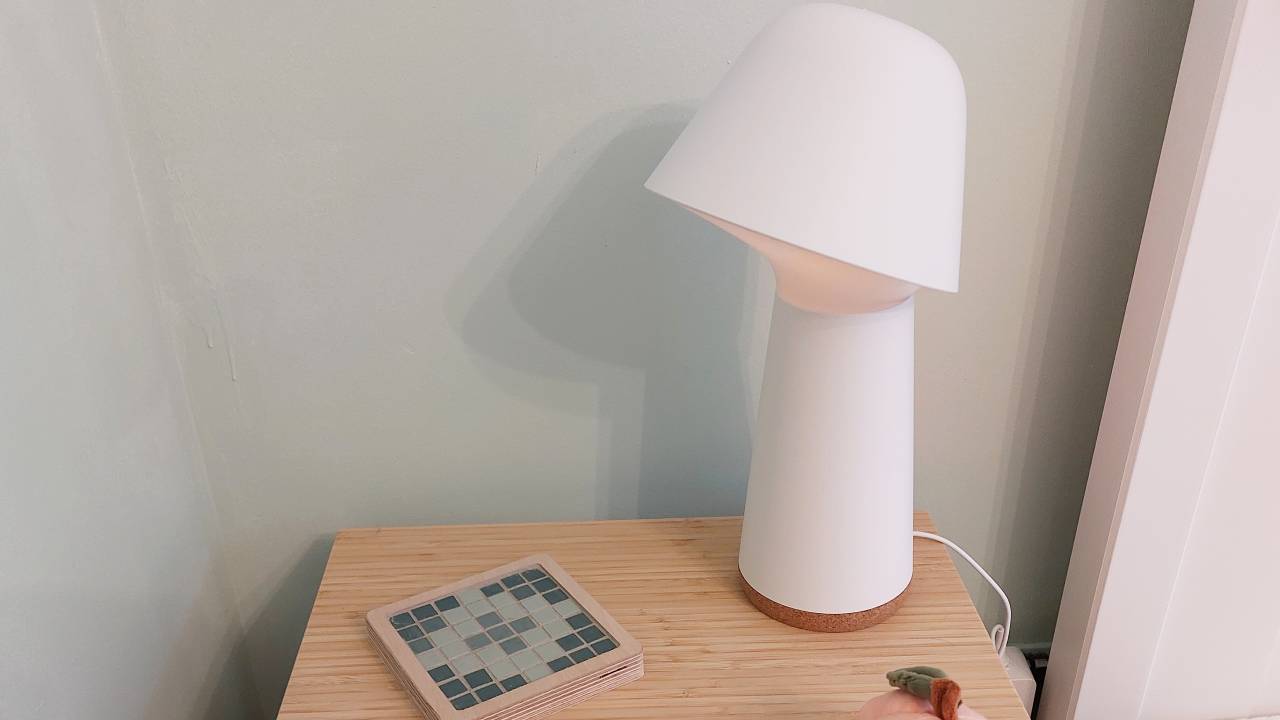
Philips Hue Twilight review: unboxing and set-up
The Philips Hue Twilight came with the lamp in a protective bag, a long cord and plug. It was extremely easy to set up – all I had to do was plug it into an outlet and it immediately lit up. While you could leave the Philips Hue Twilight like this, as you can turn it on and off via the buttons on the top, it’s best used with the Philips Hue app.
I downloaded the Philips Hue app and connected it to the lamp using Bluetooth. From there, the Philips Hue Twilight was good to go and I had access to all the Philips Hue lighting features, which can also be used with other Philips Hue lights if you have an entire smart bulb ecosystem.
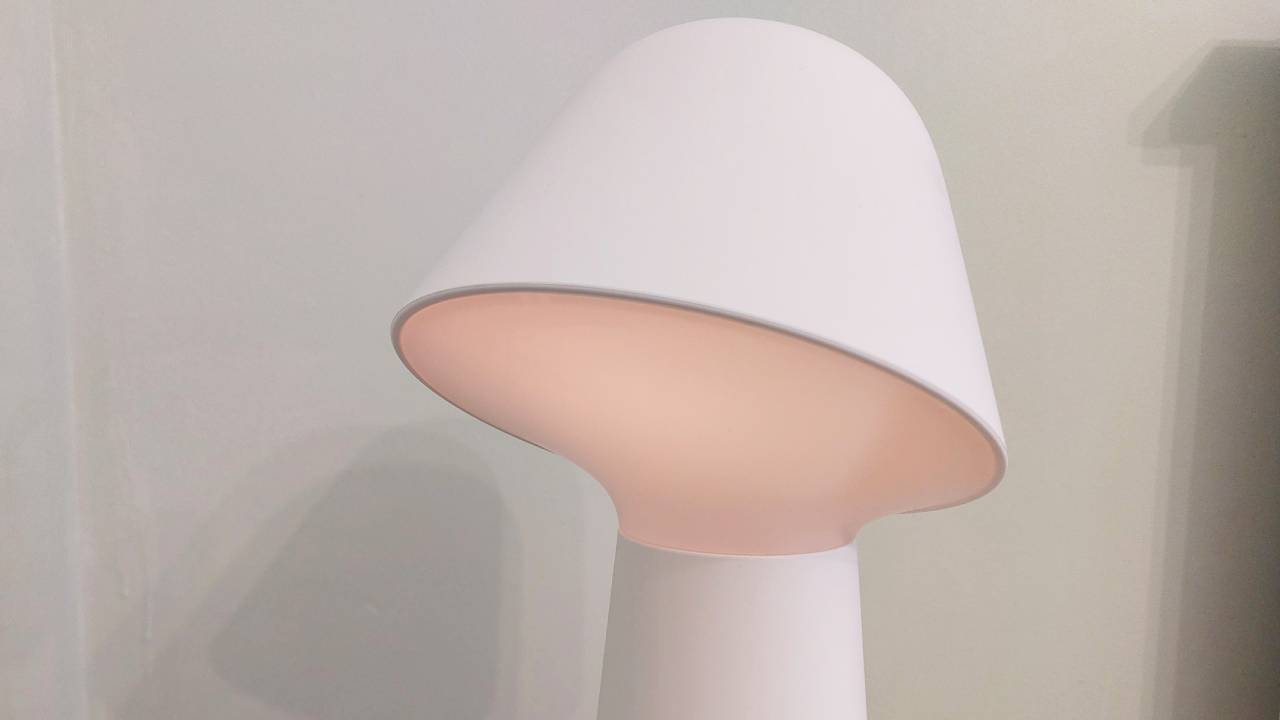
Philips Hue Twilight review: design and features
The Philips Hue Twilight is both a smart light and a wake up light, so it can be used for multiple purposes like adding light to a room, setting the mood for movies and bedtime, and as a bedside lamp. But as it's primarily designed to be a wake up light, the Philips Hue Twilight uses science-backed scenes and ColourCast gradient projection technology to set the tone of sleep.
With this sleep-focused technology, the Philips Hue Twilight uses a combination of colours and brightness to help you relax. It can be used before bed as the Philips Hue Twilight switches to warm red colours, and for waking up with its use of bright light. The science-backed scenes have also minimised blue light to avoid unwanted stimulation before bed. These features are automatically programmed into the Philips Hue Twilight, but you can set different scenes, colours and brightness with the Philips Hue app – more on this below.
The Philips Hue Twilight has a simple design with buttons located at the top which can adjust brightness and turn the lamp on and off. It looks a little like a penguin – a marked difference from other wake up lights I’ve tried – which might not be for everyone or fit your bedroom aesthetic.
Made from plastic, the Philips Hue Twilight’s LED lights are located underneath the ‘head’ of the device and at the back. The ‘head’ can be manually moved left and right for better reading, and the see-through back panel can be used for decoration. The bottom of the lamp is made from a cork-like material to create a stable stand.
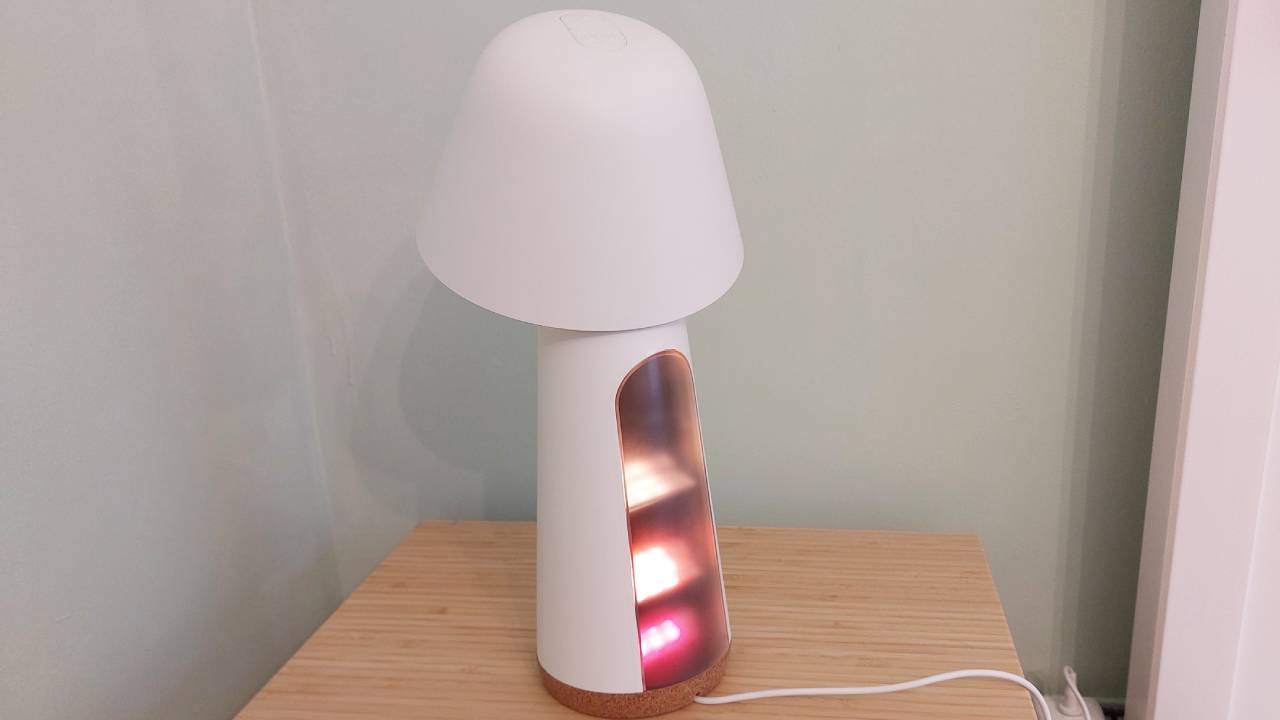
Philips Hue Twilight review: app
While you don’t have to use the Philips Hue app to control the Philips Hue Twilight, you’re really missing out if you don’t! The app allows you to completely customise every aspect of the Philips Hue Twilight, including its brightness settings, different colours, and much more.
After downloading the Philips Hue app, I customised my go-to colours for the Philips Hue Twilight, so it would automatically turn on with my favourite colours. Next, I set up my routines for waking up and going to sleep. Aside from the timing and colours, you could choose whether you wanted the front or back lights to turn on or both.
For my wake up routine, I chose the front light to turn on, and to fade in for 20 minutes at 7am. I also selected it to transition to bright when it reached the time. For my go to sleep setting, I chose the back for more ambiance and asked it to fade out for 30 minutes at around 10:30pm.
My favourite part of the Philips Hue app was its Hue Scene gallery. It has hundreds of light and colour options to choose from, and it would recommend different scenes for different times of day and year. I really enjoyed its seasonal recommendations, for example, I mainly tested the Philips Hue Twilight during October so I got lots of autumnal and Halloween scenes suggested to me.
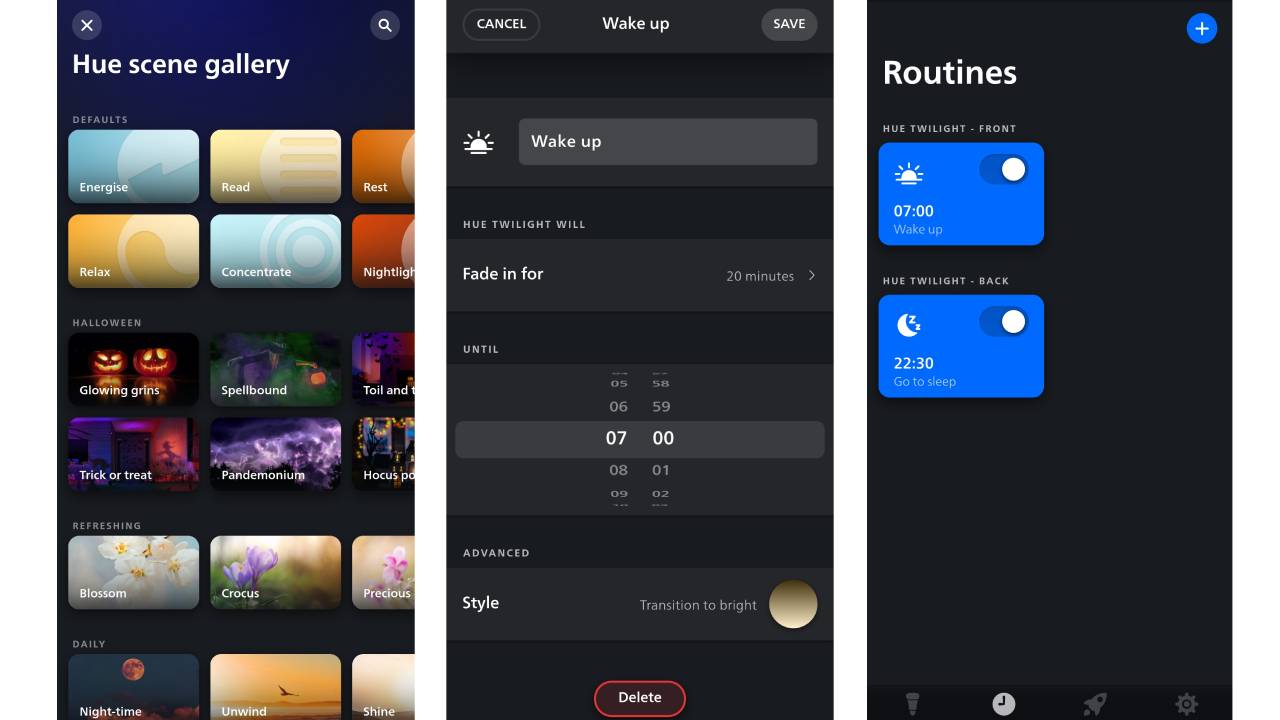
Philips Hue Twilight review: performance
When setting up the Philips Hue Twilight, I didn’t want to disrupt my bedroom aesthetic so while it can be used as a bedside lamp, I placed it opposite my bed on my chest of drawers. However, I did try it on my bedside table initially, and the Philips Hue Twilight took up less room than my normal lamp, so despite its strange design, it has a small, lightweight size which didn’t take up too much room.
Aside from its size, I felt that the material of the Philips Hue Twilight let it down slightly. While I liked that you could see the light in both the front and back of the lamp, I thought that the see-through back panel made the LED lights look a little cheap. Having said that, the two different light locations filled the room beautifully and set the right atmosphere in my bedroom.
While I did notice that the light had come on in the morning, the Philips Hue Twilight doesn’t come with any sound cycles, so it didn’t always wake me up – I had to rely on my phone alarm most days which I set as a backup. Having said that, I enjoyed using the Philips Hue Twilight on the weekends when I didn’t have anything urgent to get up for and I found it woke me up better because of that.
The main criticism I have of the Philips Hue Twilight is that it doesn’t automatically set itself, so you have to select it to turn on each evening if you want it to work for the next morning. While that might sound obvious, I’ve tried many wake up lights in my time at T3, and models from Lumie and other brands automatically turn on at the same time every morning and evening unless you ask it not to – which I much prefer.
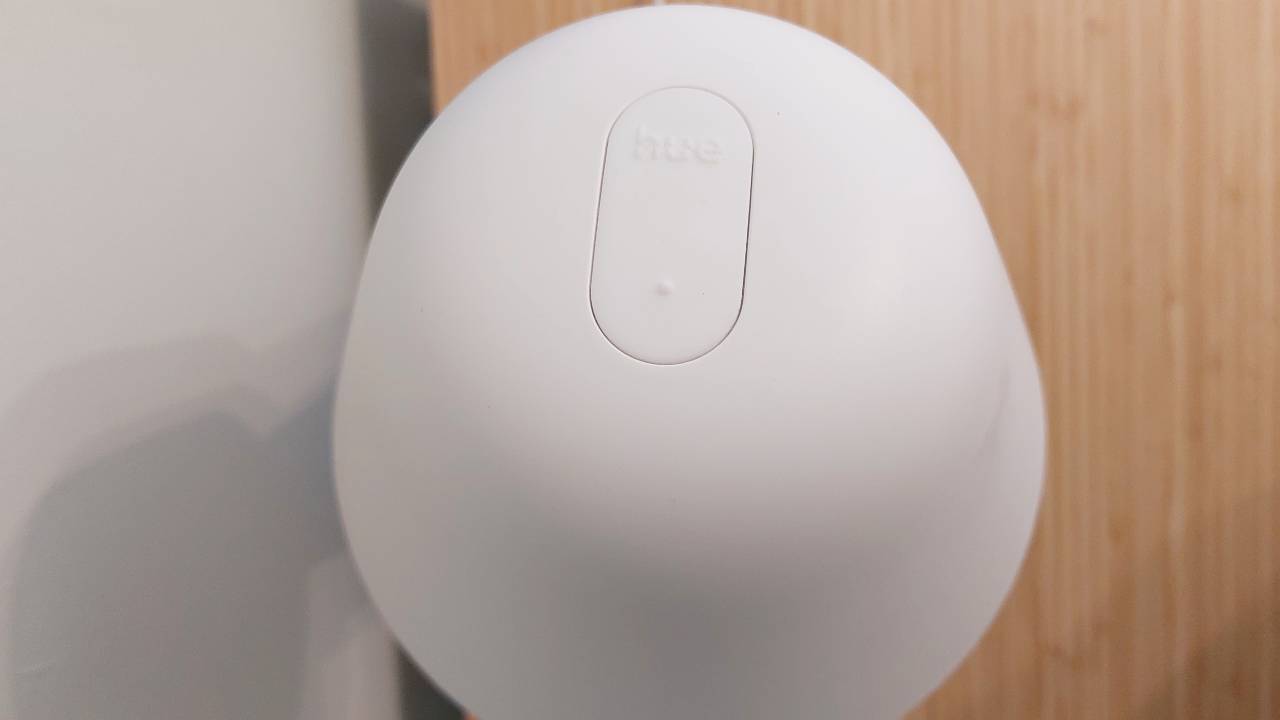
Philips Hue Twilight review: verdict
The Philips Hue Twilight is a joy to use, mainly because of the intuitive Philips Hue app with its many colours, scenes, routines and brightness options. I don’t think the design of the Philips Hue Twilight will be for everyone, but I liked its simplicity, buttons and lightweight size.
I think it misses the marks slightly on what a wake up light is. Most models you can find today offer sound cycles to ensure you definitely wake up – albeit still naturally – and they’ll automatically set themselves for you. The Philips Hue Twilight doesn’t quite offer these features, but as a smart light, it definitely exceeds expectations.
As I continue to use it, I’ll likely use the Philips Hue Twilight more like a smart light or bedside lamp than a wake up light. But as a first attempt at a wake up light, the Philips Hue Twilight is pretty admirable.
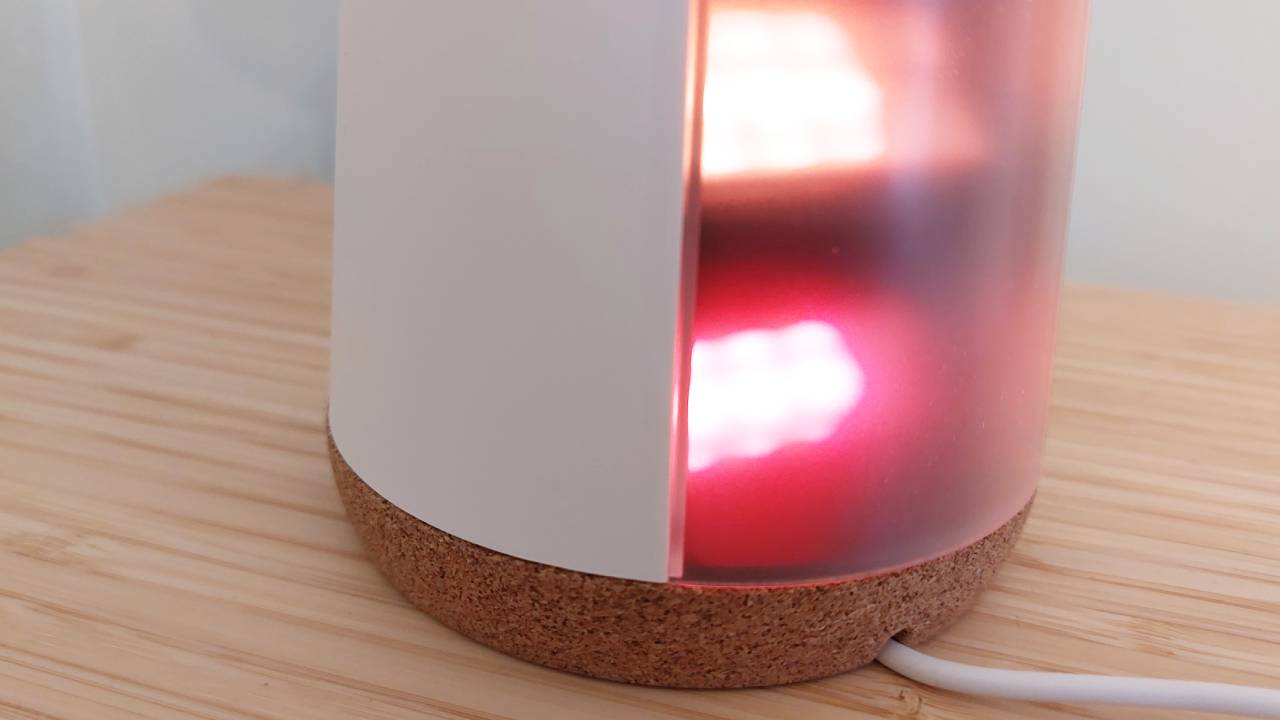
Philips Hue Twilight review: alternatives to consider
A good alternative to the Philips Hue Twilight is the Lumie BodyClock Shine 300. As T3’s favourite wake-up light, the Lumie BodyClock Shine 300 is packed full of soothing light and sound features, and it even has a snooze setting and FM radio.
While Philips, its parent company, has made plenty of wake up lights in the past, the Twilight is the first time that Philips Hue has made one. So, if you fancy a wake up light from a brand with a bit more experience, I’d suggest checking out the Philips Somneo or the Philips SmartSleep which feature in our best wake up light guide.







